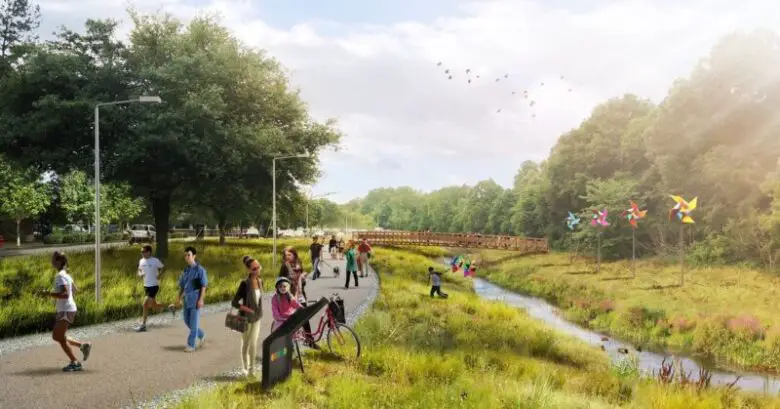Urban Planners Must Put Health First Says WHO

More than half of the people in today’s world live in cities, and by 2050 this figure is projected to grow to more than two thirds.
People generally live in or close to cities because this is where they can find work. Cities also offer opportunities for social interaction, educational facilities, and cultural activities.
But how healthy are our cities? And how healthy are the buildings in our cities?

The positive aspects of well-planned cities include parks and wide-open public spaces, broad sidewalks, safe cycle lanes, accessible and affordable public transport systems, and good quality housing that can accommodate people from the full range of ethnic and economic groups.
The problem is that unfortunately, most cities worldwide incorporate cramped slums and homeless camps or informal settlements, and high-rise multi-family buildings with small living spaces that are noisy and tend to result in social alienation and even violence. Air pollution and filth are also common in many parts of the world, which compromises health and the wellbeing of people of every age.
A horrifying fact is that more than 80% of the world’s cities do not comply with the air quality limits set by WHO. Of those that monitor air pollution, more than 50% report air quality that is at least 3.5 times more than the WHO limits. Furthermore, air pollution is responsible for more than a tenth of deaths worldwide!
Buildings are part and parcel of our cities, and there are many design elements that need to be factored in to ensure that they are healthy. Heating, ventilation, and air-conditioning (HVAC), indoor air quality, and compliant plumbing that delivers quality water and removes waste.
Urban planners work very closely with architects and engineering firms like New York Engineers when planning cities, prioritizing air quality, and other elements that are vital for the good health of occupants.
Health Must be the Priority When Planning Cities

Two years ago, in March 2018, the World Health Organisation (WHO) director for the Department of Public Health, Environmental and Social Determinants of Health, Dr. Maria Neira, called on urban planners to make health the number one priority when planning new cities. This was when WHO had just announced its alliance with three international organizations in an endeavor to mobilize cities worldwide to do everything possible to achieve safe air quality levels by 2030.
- The United Nations Environment Programme (UNEP) that informs, inspires and enables nations and peoples to improve their quality of life without compromising future generations.
- The Climate & Clean Air Coalition, a UN initiative that is led by governments that are voluntary partners committed to improving air quality and protecting climate.
- The BreatheLife campaign, which is a growing network of cities, regions, and countries looking for solutions to various health and climate impacts including the quality of air in cities.
Dr. Neira pointed out at the time that an excellent indicator of the health of a city was its air quality. It is no coincidence that well-planned cities with good transport systems, lots of green open spaces, and safe, walkable streets have low levels of air pollution. But where urban areas are designed to prioritize transportation rather than the needs of pedestrians and cyclists, air pollution levels soar.
Air Pollution is a Killer

Dr. Neira describes air pollution as “an insidious killer.” Outdoor air pollution kills around 3 million people prematurely every year, mostly in Asia, Latin America, and Africa.
What happens is that tiny, invisible particles from pollutants penetrate deep into the lungs and into the bloodstream, affecting the various organs in the body. Cancer and cardiovascular disease are both commonly cause by these tiny particles that people don’t even realize they have breathed. But data released by WHO shows that about one in every three deaths from lung cancer, chronic respiratory disease, and stroke are in fact caused by air pollution. It is also linked to one in every four heart attack deaths, making it one of the most critical threats to health today.
This is why WHO is adamant that health and well-being have to become the number one priority for urban planners.
“If we don’t take action now,” says Dr. Neira, “air pollution will choke our cities and make them even more deadly places to live.”
It is vital for governments to introduce policies and invest in cleaner transport, power generation, industry, energy-efficient housing, and better waste management. But it is also important for them to educate people about levels of air pollution where they live so that they can begin to understand the deadly impact it can have on their health. This, she says, is “the most effective way to trigger action.”
How to Integrate Health in Urban Planning

WHO is well aware that the way we plan cities and build them will define the quality of life for all who live there. This also affects the quality of everything else from the air that we breathe and water we drink to our transportation opportunities, education, health care services, employment, and our access to good quality food.
There is nothing new about considering health and well-being, and environmental and social factors when planning cities. But it is a challenge to ensure that urban and regional leaders are equipped with the knowledge to guide the integration of health and well-being into the many necessary planning processes.
As a result, WHO has developed a sourcebook, published last month (May 2024) that offers practical guidance on integrating health into urban planning and governance. A comprehensive publication, which is available free from the WHO website online, it also illustrates how a good, integrated approach to health can help planners make decisions about transport, energy, housing, water, and sanitation – and all the other things that matter to people in their daily lives. After all, if planning isn’t intended to preserve and improve human and planetary health, then what’s the point?

The publication titled Integrating health in urban and territorial planning: A sourcebook is aimed at a broad readership. This is because human health and well-being are paramount, and every one of us, whether we are urban planners, engineers, building managers, teachers, leaders, community health workers, mayors, or developers, must try to do our bit.
